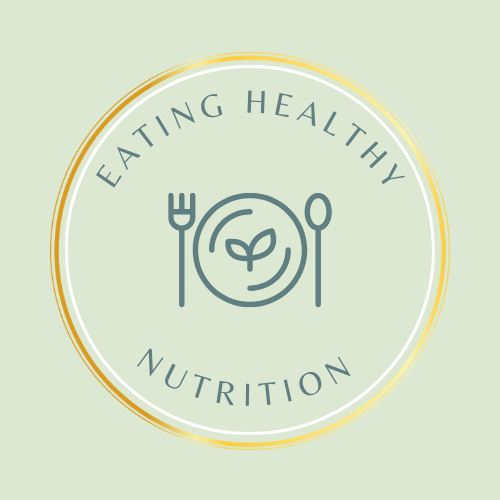I always thought that reading a food label was pretty easy, being a dietitian and all, but when we “joined” the food allergy world that changed immensely.
Currently, there is a law that all top allergens must clearly be labeled on a food item. This means that if a food product contains peanuts, tree nuts, egg, soy, wheat, fish, shellfish or milk it must clearly state that. Sesame recently got added to the top allergen list, so labeling for sesame must be on all packages as of January 1, 2023.
A lot of companies choose to label for allergens below the ingredient list as well as in the ingredient list itself, but this is not the law. Therefore, don’t bypass the entire ingredient list looking for that last line stating the allergens because it may not be there. Look at every single ingredient closely every time.
I’m sure you have seen the term “natural flavoring” or “natural flavors” in an ingredient list before. So, what is “natural flavoring” anyway? What is it made of? Natural flavors can be from many things including, but not limited to, spices, fruit, veggies, yeast, herbs, roots, etc. If an ingredient list includes “natural flavoring” or “natural flavors”, it needs to clearly state if a top allergen is present within that flavoring, but if the flavoring does not include one of the top 9 allergens then it does not have to be listed. For example, our family has a mustard allergy and mustard could be a part of a manufacturers “natural flavors” and the word mustard may never be written in the ingredient label. Therefore, if you see the term “natural flavor” or “flavoring” even “spice” and you have food allergies that are not part of the top 9 (top 8 if before 2023) contact the manufacturer for clarification. The sad part is I have been told by companies that they can’t tell me what is in their natural flavoring. That was a shock. I’ve realized that the key to finding out what is in a company’s ingredients is the way you phrase the question. I used to ask “What is in your natural flavoring?” and that did not get me very far. Now I ask “Does your natural flavoring contain mustard?” They will answer that specific question as compared to the broader version. Obviously, if we don’t get a clear answer then we bypass that particular product, as should you.
Now, as stated above, companies have the legal obligation to state any top allergen in their food product, but it is not the law that they have to state if a food was made in the same facility or on the same lines as these top allergens. Some people may think if it doesn’t contain my allergen then it is safe to eat. For some, this is not necessarily true. There is an optional precautionary label that can be added to products if the manufacturer chooses. If you see a “may contain” or “produced in the same facility as” label then this means the specific allergen is present in the facility and the food item is at risk of cross contamination*. Remember this labeling is completely optional. If there is no precautionary label that does not automatically mean that the allergen isn’t present. This is a time when you need to contact the manufacturer directly and ask more questions.
When our daughter was first diagnosed with allergies our allergist specifically told us to avoid any food that was made in the same facility as nuts. Since then we have loosened up a bit and at times may feel comfortable with a product that is made in the same facility, but not on the same lines. It depends on the company and their protocols. The manufacturer does not have to state if the food was made in the same facility vs the same lines on the food label. They don’t have to label anything at all when it comes to other food products they produce. This is something the food allergy community is fighting to change. Clear labeling would help those living with food allergies decide if a food is safe for them. Then they can make the call on whether they want to buy the item. For now, you must call every food manufacturer without a “may contain” label to see what other food products their facility produces. What makes this even trickier is that manufacturers change their procedures all the time. For example, during Covid a lot of manufacturers had to change suppliers, so something that was safe pre-Covid may not have been safe during Covid. One day I gave our daughter a granola bar that she has had many times prior. After she finished eating it, I noticed a hive developing on her lip. I ran to the box and saw that they had added chia seeds (an allergen of hers) to the ingredient list. Something that was not there the last time we purchased this product. I didn’t take the time to read the label, since it was something my daughter had many times in the past. It is not a common allergen so it was not in bold or stated at the bottom of the ingredient list. This is why I urge you to read the ingredient label every time.
Something else to take into consideration is that the type of wording on the precautionary label, such as “may contain” or “processed in the same facility as”, does not reflect the risk. These labels all mean the same thing, which is that this food was made in a facility and possibly on the same line as a specific allergen. That is it. Neither statement is safer than the other. And remember these types of labeling are voluntary, so if there is no label that does not mean the risk is not there. It just means they choose not to label. These are the manufacturers that I call/email every time.
Bottom Line: Read the ingredient label! No matter what. If you had that food before, read the ingredient label again. Things change all the time. I know it is a little time consuming, but it can be lifesaving.
*Cross contamination is the when allergens spread from one food product to another. This can happen without anyone realizing. A lot of manufacturers have systems in place to check for this accidental cross contamination, while others do not. This is another good question to ask the company’s that you intend to purchase products from. What is their allergen protocol when it comes to the potential of cross contamination when they have other allergens within their facility or that share the same lines.
If you prefer video as compared to reading blog posts, check out my YouTube channel!
If you would like to receive tips on healthy eating and food allergies as well as updates on new blogs, subscribe below!
Like to learn more about food allergies, mindful weight loss or overall health living and longevity, click here and book a session with Elizabeth.
[mailerlite_form form_id=1]

